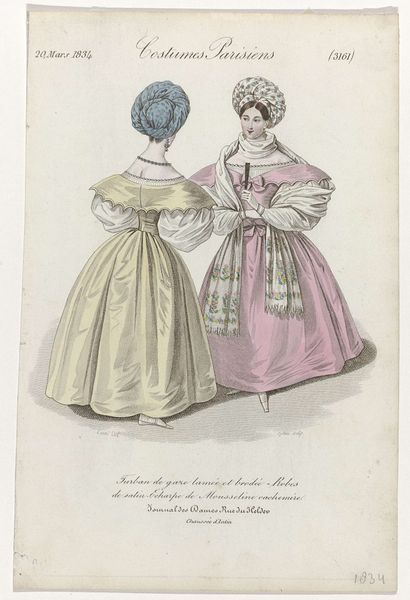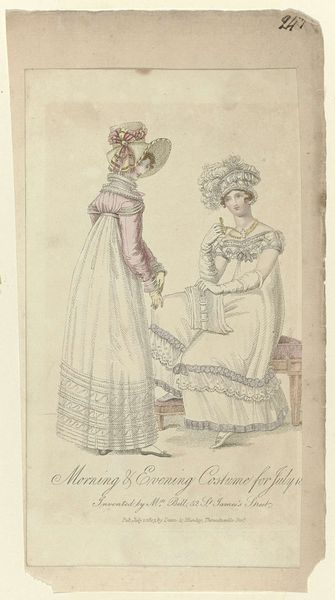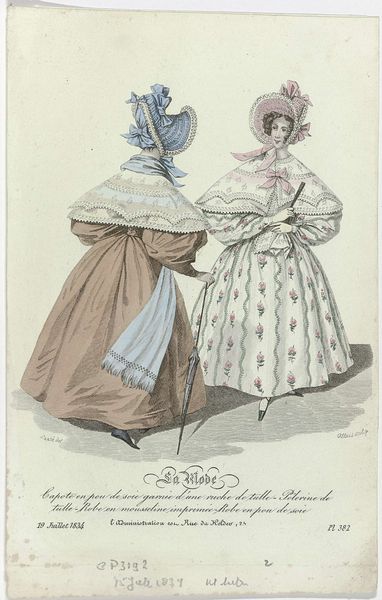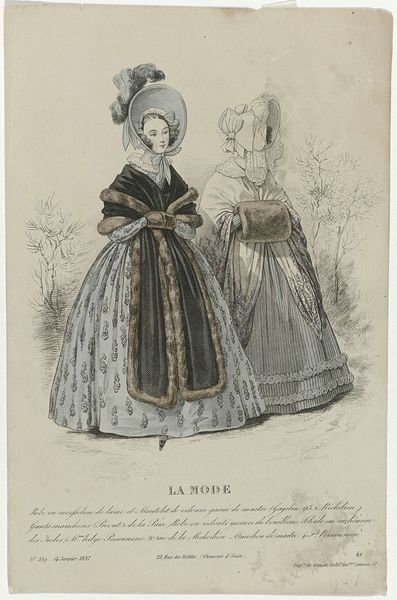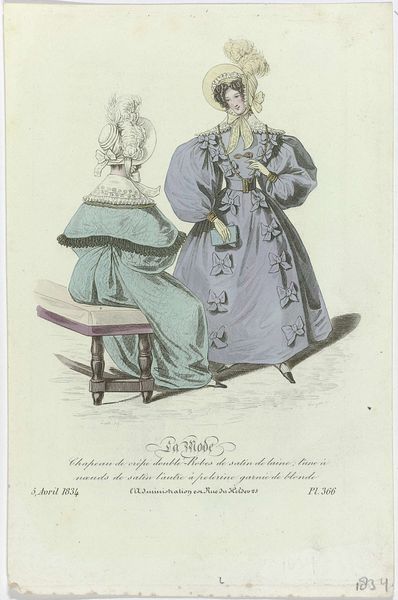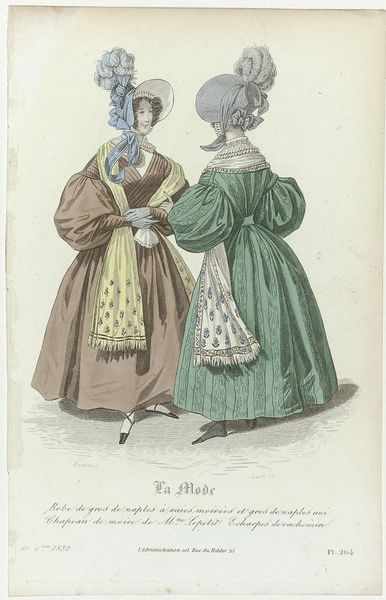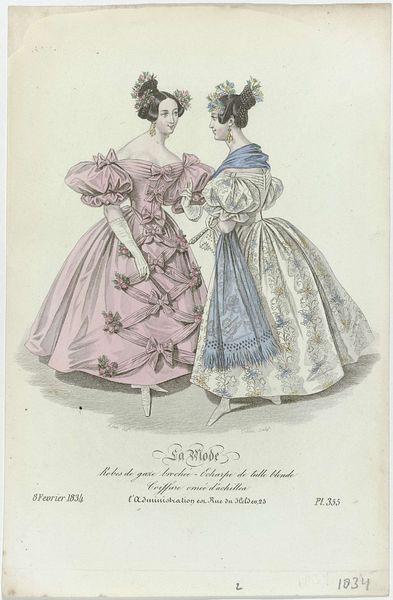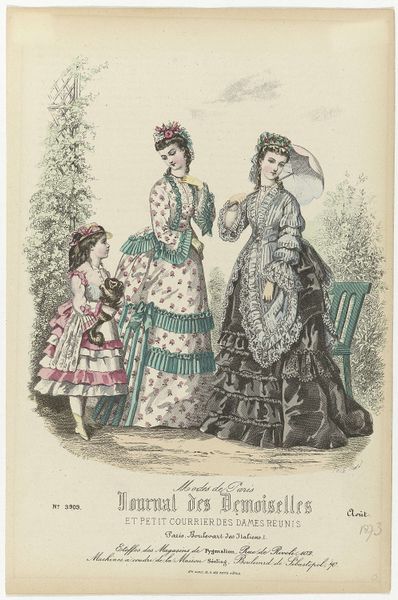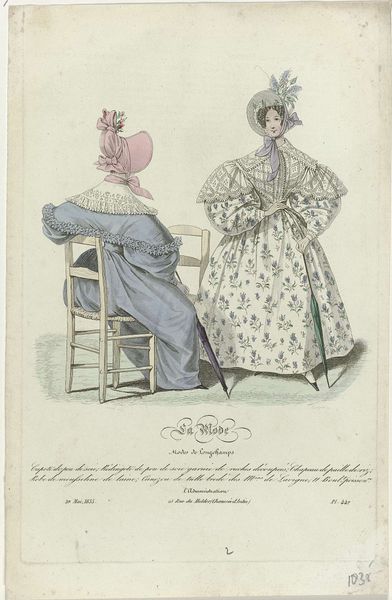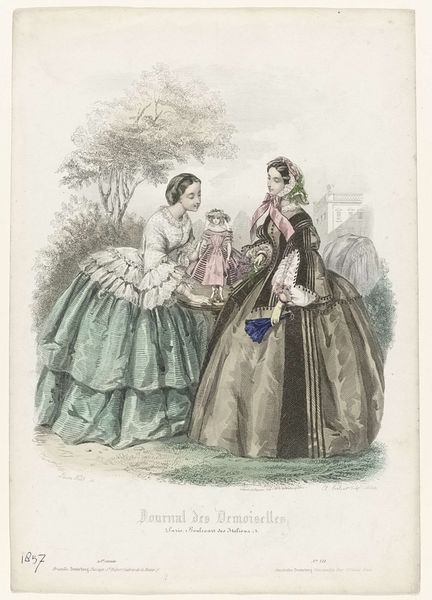
drawing, coloured-pencil, print, etching, ink
#
portrait
#
drawing
#
coloured-pencil
# print
#
etching
#
figuration
#
ink
#
coloured pencil
#
watercolour illustration
#
genre-painting
#
dress
#
watercolor
Dimensions: height 223 mm, width 140 mm
Copyright: Rijks Museum: Open Domain
Curator: So, here we have "La Mode, 1831, Pl. 178," an etching with ink and colored pencil by August Delvaux, likely a print intended for circulation. It depicts two women modeling the latest hat and dress designs. What strikes you most about it? Editor: Well, besides the obvious… those sleeves! They’re like giant puffs of smoke billowing around their arms. It's as if they are perpetually on the verge of taking flight, slightly comical. I immediately think 'balloon animals' but with much better posture. Curator: The exaggerated sleeves and hats were indeed the height of fashion at the time. Fashion plates like this served a vital commercial function. Disseminating images of what was chic, dictating trends and driving demand for fabrics and the skills of dressmakers. Notice how the plate advertises the hat shop of M. Guichard. Editor: Of course! This isn't just art; it’s an advertisement masquerading as elegance. Those meticulous lines are not just decorative; they're literally drawing customers. Do you think people felt pressured to keep up? Curator: Undoubtedly. The rise of fashion magazines and these kinds of prints coincided with the growth of consumer culture. "Keeping up with the Joneses," if you will, became a social imperative for the middle and upper classes. Clothing became a symbol of status and belonging. Editor: It makes you wonder about the actual comfort level of these ensembles. Did anyone pause to consider practicality? It is beautiful in its strange way, but a little oppressive, and I am a sucker for beautiful. I wonder, too, how women actually *moved* in those gigantic sleeves! Did doors get wider? Curator: Such illustrations reflected an idealized version of reality. Consider that the print format itself offered wide distribution. Each impression subtly reinforcing specific ideals about femininity, about aspiration, about the "modern" woman. The very circulation of the prints had socio-political implications. Editor: It's a potent reminder that art isn't created in a vacuum. This fashion plate really showcases that perfectly, linking beauty and commerce. I now appreciate its complexity. Curator: Indeed, a glimpse into how art actively shapes society’s desires and anxieties, wouldn’t you say?
Comments
No comments
Be the first to comment and join the conversation on the ultimate creative platform.
